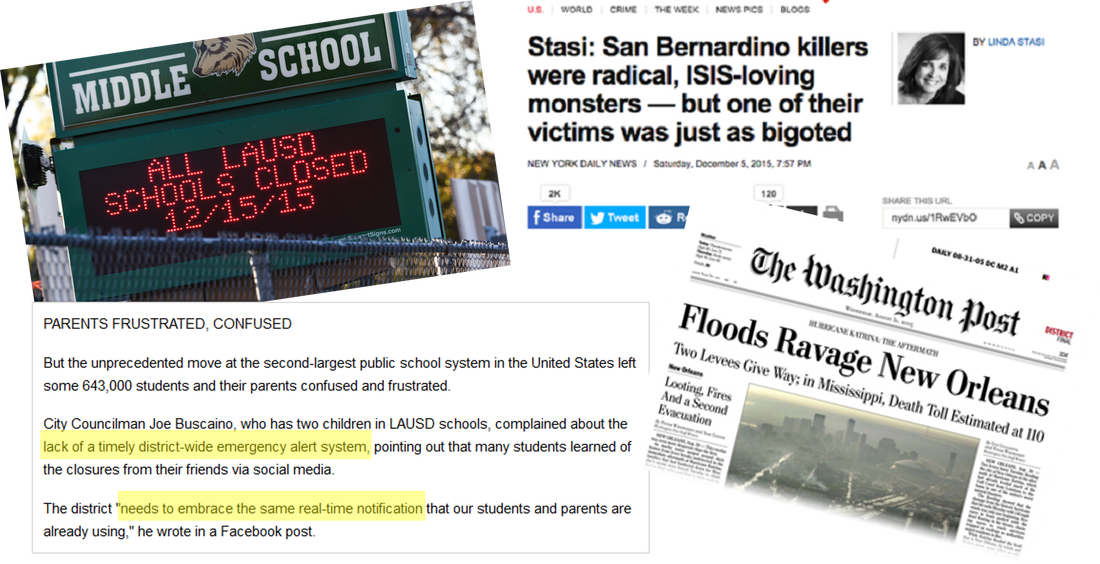The increasing reports of terrorism attacks and sudden natural disasters in the media are harsh reminders of the ever-present threat that we face in the world today.
Although such emergencies are unpredictable by nature, it is possible for organizations to prepare for potential negative scenarios that might occur. This includes implementing a reliable crisis communication system that can be activated in an emergency situation to complement your business continuity plans.
During a crisis, it is critical that instructions to all stakeholders are communicated real-time to reinforce the overall decisions led by the management. Unfortunately, the importance of developing crisis management, emergency response, and business continuity plans is not always emphasized in organizations today, leading to detrimental consequences.
Although such emergencies are unpredictable by nature, it is possible for organizations to prepare for potential negative scenarios that might occur. This includes implementing a reliable crisis communication system that can be activated in an emergency situation to complement your business continuity plans.
During a crisis, it is critical that instructions to all stakeholders are communicated real-time to reinforce the overall decisions led by the management. Unfortunately, the importance of developing crisis management, emergency response, and business continuity plans is not always emphasized in organizations today, leading to detrimental consequences.
Following the chaos of the San Bernardino attacks, Los Angeles shut more than 1,000 public schools on 16 December 2015 over a threatened attack with bombs and assault rifles, sending hundreds of thousands of students home.
In the aftermath of the incident, it was reported that many students only learned of the closures from their friends via social media, resulting in complaints about the "lack of a timely district-wide emergency alert system". This highlights the importance of organizational preparedness and the need for real-time crisis notification to disseminate evacuation information or send periodic updates, in order to ensure accountability towards those involved.
From a business perspective, how can we improve on our evacuation plans and procedures to prevent such an incident from happening again?
According to Nielsen Research, the adoption rate for smartphones is three times that of social media, which makes mobile technology an ideal vehicle for enhancing crisis communication. However, implementing a broadcast SMS solution is simply not enough. In unforeseen circumstances whereby the SMS channel cannot function (eg. post-disaster network failures), an organization's business continuity plan will be jeopardized and rendered useless due to a lack of alternative channels to communicate with employees.
By 2016, the number of global smartphone users is estimated to reach 2.16 billion (eMarketer, December 2014). With the prevalence of smartphones, it is recommended that organizations equip themselves with a real-time crisis communication tool that is able to send messages through multi-channel communication modes such as SMS, push notification, email and voice call. This enhanced strategy aims to maximize outreach in the shortest possible time during an emergency activation.
In addition, it is recommended that organizations shift away from the concept of assembly areas and manual headcounts. In a bomb threat scenario, gathering large groups of people in an assembly area to account for their safety would not only be tedious, but also counter-productive as it creates an opportunity for terrorists to launch a massive attack in the vicinity, endangering even more lives.
Thus, in the best interests of all employees, organizations should implement virtual accounting. Employees can report their safety at real-time via the multi-channel communication modes and the system will automatically keep track of all responses to generate updated statistics for the management. The benefits of virtual accounting include a quicker response rate, accuracy of real-time data and the ability to view graphical reports that the management can take advantage of to make key decisions swiftly.
Nothing can prepare us for the human shock of events such as acts of terror or natural disasters. However, good Business Continuity Planning and a well-integrated crisis communication tool can prepare your organization to act quickly during a crisis and accelerate your disaster recovery.
About RapidRecall
Designed to empower your organization with a more efficient and reliable methodology of crisis communication, RapidRecall is a proven cloud-based business continuity management solution that can prepare you for the situations discussed above. With automated call tree technology, RapidRecall allows the flexibility to scale and notify thousands of personnel within the shortest time possible.
Designed to empower your organization with a more efficient and reliable methodology of crisis communication, RapidRecall is a proven cloud-based business continuity management solution that can prepare you for the situations discussed above. With automated call tree technology, RapidRecall allows the flexibility to scale and notify thousands of personnel within the shortest time possible.


 RSS Feed
RSS Feed